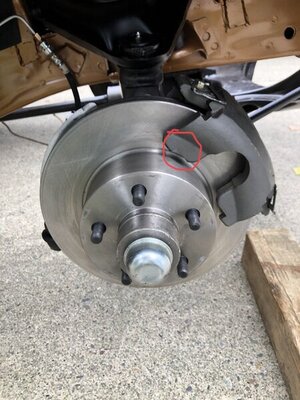westie47
Well-Known Member
My ‘69 Coronet came with manual disc brakes off of a ‘75-76 A Body. I decided to keep them, so I bought new rotors and pads. All of the parts matched the old parts.
When I put the new pads and calipers on, the rotors turned very stiffly, and when the wheels went on, they turned a little bit but rubbed on the calipers then wouldn’t turn at all. I took the outer pad off each side and everything spins and fits just fine.
Are my pads too thick or am I missing something else?
Here’s some pic of the old rotor, new rotor and outer pad.



When I put the new pads and calipers on, the rotors turned very stiffly, and when the wheels went on, they turned a little bit but rubbed on the calipers then wouldn’t turn at all. I took the outer pad off each side and everything spins and fits just fine.
Are my pads too thick or am I missing something else?
Here’s some pic of the old rotor, new rotor and outer pad.

















